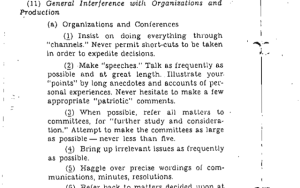In 1944, the CIA’s precursor, the Office of Strategic Services, distributed the Simple Sabotage Field Manual, a pamphlet containing instructions on how Allied sympathizers in Nazi Germany might weaken the companies they worked for.
Such advice included avoiding shortcuts and doing everything through channels, advocating caution, and making sure approvals required multiple people.

Ironically, for many IT organizations, such counterproductive measures may sound surprisingly familiar, and in fact, may be part of a formal approach to IT Service Management (ITSM) known as ITIL.
ITIL (which once stood for Information Technology Infrastructure Library, but is now simply ITIL) is a set of ITSM practices and procedures for core IT processes like change management, service-level management, incident management, and several others.
ITIL has actually been around since the 1980s, and has matured substantially in the intervening time. Today it belongs to AXELOS, a joint venture between the British Government and Capita plc. In spite of these years of progress, however, today’s Agile, DevOps context for IT makes the current version of ITIL from 2011 look to some people like a recipe for roadblocks and busy work.
ITIL: Part of the Problem?
In fact, ITIL skeptics abound. “Frameworks like ITIL create the illusion of control that results in [the] organisational delusion that IT is efficient and manageable,” says Greg Ferro, long-time consultant and co-founder at Packet Pushers Interactive. “The single biggest problem in ITIL [is that] the creation of silos creates ‘not my problem’ attitudes.”
Read the entire article at http://www.forbes.com/sites/jasonbloomberg/2015/11/13/devops-and-itil-friends-or-enemies/.
Intellyx advises companies on their digital transformation initiatives and helps vendors communicate their agility stories. As of the time of writing, Chef Software and Moogsoft are Intellyx customers. None of the other organizations mentioned in this article are Intellyx customers. ITIL is a registered trademark of AXELOS.



